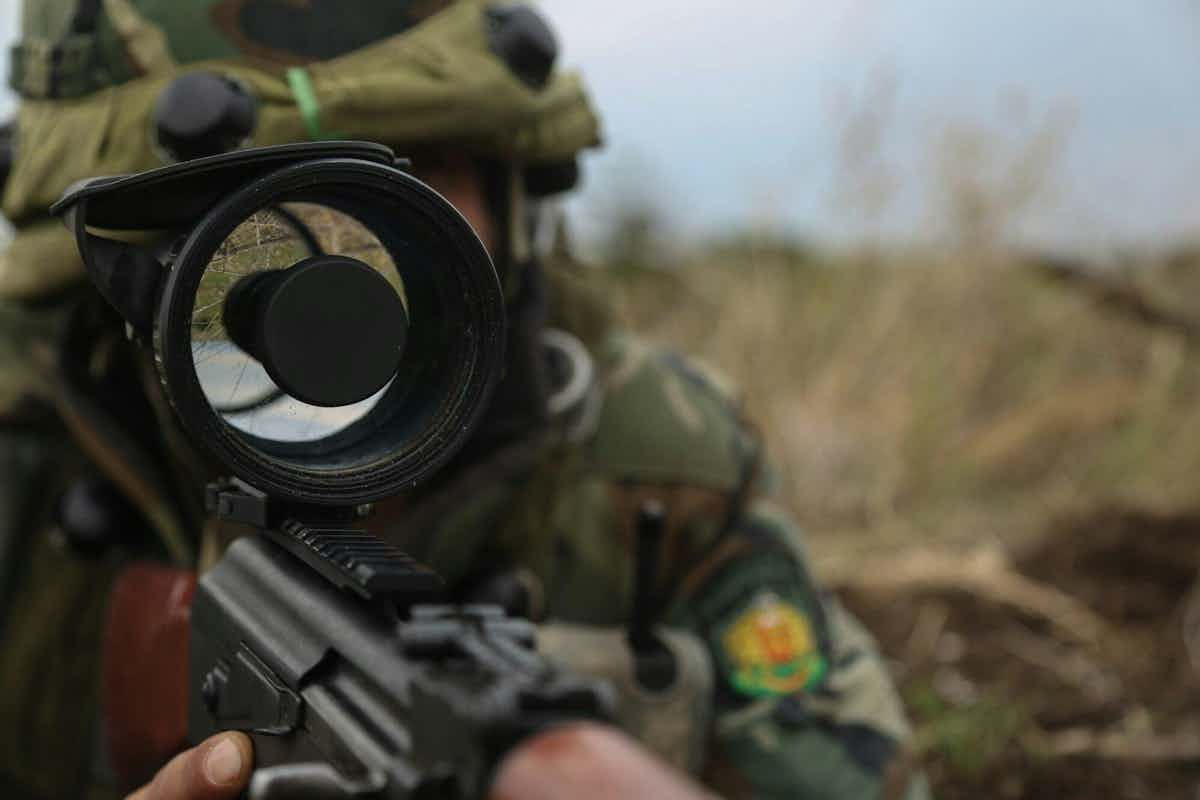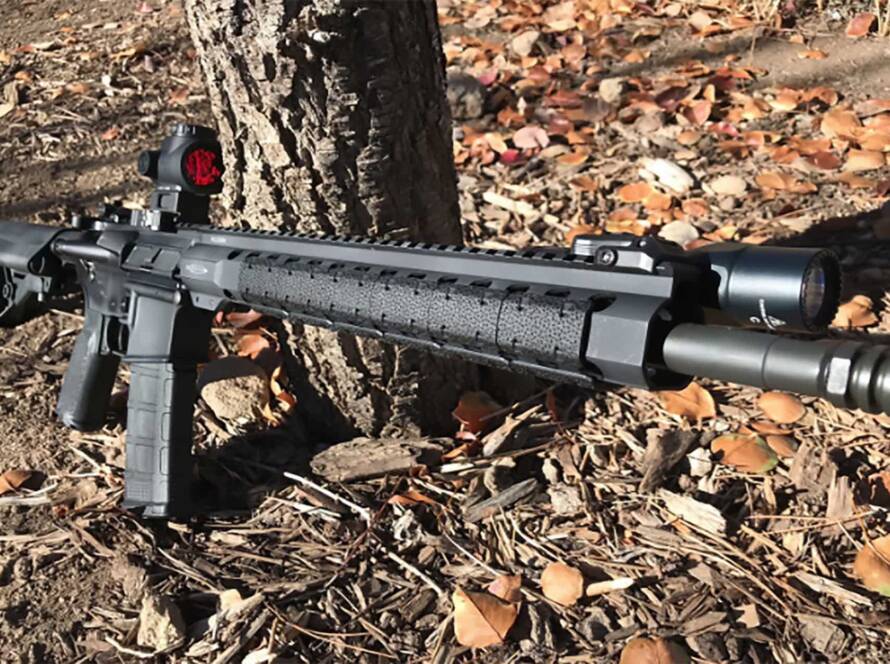When the sun dips below the horizon, and shadows creep across the terrain, your ability to shoot accurately is put to the test. In low-light conditions, the line between a clear shot and a complete miss often depends on one thing: the quality of your optics.
Whether you’re hunting game at dusk, training in reduced light, or preparing for a tactical scenario, relying on standard equipment just won’t cut it. This is where scopes truly shine, transforming dim surroundings into crisp, manageable visuals. By harnessing advanced features tailored for low-light performance, you’ll not only sharpen your aim but also boost your confidence in any condition.
Read on to take your accuracy to the next level and explore how the right scope can help you conquer the darkness.
Why Low Light Challenges Accuracy
Shooting in low-light conditions is a real test of your skill and equipment. Human eyes rely on light to perceive detail and depth. When light levels drop, so does your ability to differentiate shapes and contrast.
For example, the retina’s rod cells, responsible for low-light vision, lack color sensitivity and struggle to process fine details. This often means your target can, more or less, become a shadowy blur instead of a clear focal point.
For hunters, this can be a significant issue. Deer and other game are most active during dawn and dusk; periods when visibility is at its lowest. Tactical shooters, on the other hand, might find themselves operating in dimly lit environments where the risk of error is amplified.
Even recreational marksmen might, at times, face the frustration of struggling to hit their targets as daylight fades.
A poorly matched scope doesn’t help. Standard rifle optics often fail to amplify available light adequately, making it nearly impossible to maintain precision shooting. This is why low-light scopes, with features specifically designed for dim conditions, tend to be so invaluable.
Having the right scope bridges the gap between the limits of human vision and the demands of low-light shooting.
Features to Look for in a Low-Light Scope
Finding the right low-light scope means knowing what to look for. Some scope features are more important than others when the goal is to maximize visibility in dim conditions.
Objective Lens Size
The size of the objective lens plays a huge role in low-light performance. A larger objective lens gathers more light, which, in turn, improves brightness and clarity. For instance, a 50mm objective lens offers noticeably better light transmission than a 40mm lens.
However, larger lenses can make your scope heavier, so balancing size and practicality often becomes a key decision.
Lens Coatings
Multi-coated lenses significantly enhance light transmission while reducing glare. This is critical when shooting in conditions where light sources, like the moon or artificial lights, might create reflections. A fully multi-coated lens ensures minimal light loss, allowing more detail to reach your eye.
Reticle Options
Low-light conditions call for reticles that stand out. Illuminated reticles, often powered by LED or fiber optics, provide contrast against dark backgrounds to help you keep your aim steady.
Reticles with thicker crosshairs or specific designs like BDC (Bullet Drop Compensator) patterns can also make targeting simpler in dim lighting.
Durability and Adjustability
Scopes used in low-light environments often face tough conditions, such as moisture, cold, or dirt. A durable, waterproof, and fog-proof scope is non-negotiable. Adjustable parallax helps maintain accuracy when conditions are far from perfect.
Common Mistakes When Shooting in Low Light
Shooting in low-light conditions presents unique challenges, and even experienced shooters can fall into common pitfalls. Addressing these mistakes can drastically improve accuracy and performance in dim environments.
Choosing the Wrong Scope for the Conditions
Not all scopes are designed for low-light environments. Shooters sometimes use standard optics that lack critical features like illuminated reticles or multi-coated lenses. These scopes struggle to gather enough light and leave the shooter at a disadvantage.
Relying Too Much on High Magnification
Another common error is cranking up the magnification in low light. While this might seem like a solution, higher magnification reduces the field of view and can darken the image, making it harder to track moving targets.
Instead, opt for moderate magnification that balances visibility and usability.
Ignoring the Role of Eye Relief
Eye relief (the distance between your eye and the scope) plays a crucial role in low-light shooting. Some shooters position themselves too close or too far from the scope, leading to a partial or unclear view through the lens.
Adjusting eye relief ensures a full-sight picture and avoids unnecessary strain during extended use.
Overlooking the Role of Ammo
Using ammunition that produces excessive muzzle flash can compromise your night vision. This bright burst of light is not conducive to night vision and makes it difficult to refocus on your target.
Instead, choose ammunition designed for minimal flash to maintain your visibility and control during low-light shooting.
Tips for Maximizing Scope Performance in Low Light
Even the best low-light scopes need proper setup and care to perform at their peak. Whether it’s adjusting brightness settings or practicing under similar lighting conditions, small details can have a big impact.
Adjusting Brightness Settings
An illuminated reticle isn’t much use if it’s blinding you in the dark. Adjust the brightness to match the ambient light. A lower setting often works best to avoid overpowering the scene while still making the reticle visible.
Using the Right Mounts
Your scope might be great, but if it’s not properly mounted, it won’t perform as intended. A secure, high-quality mount ensures the scope stays stable during recoil and maintains its alignment over time.
Cleaning and Maintenance
Dust, smudges, and moisture can obstruct your view. Regularly cleaning your lens with a microfiber cloth and an appropriate cleaning solution can keep your optics in top shape. Protective covers are also a good idea for storage and transport.
Training for Low-Light Conditions
It’s one thing to read about low-light shooting; it’s another to practice it. Spend time shooting during twilight or in controlled low-light environments to familiarize yourself with your scope’s features and performance. This helps you react instinctively when the pressure is on.
Selecting the Right Ammo
Surprisingly, your choice of ammunition can play a role in low-light success. Ammunition with a consistent muzzle velocity and minimal flash is preferable, as excessive muzzle flash can ruin your night vision momentarily. For hunters, pairing the right ammo with your hunting scopes can maximize your success during dusk or dawn hunts.
Trusting Your Setup
Finally, confidence in your equipment matters as much as the gear itself. Spend time:
- Fine-tuning your scope
- Practicing your shots
- Ensuring every element works together seamlessly
Shooting in low light often demands, above all, patience and preparation.
Advanced Technology in Low-Light Optics
Low-light optics have come a long way, thanks to cutting-edge advancements that cater specifically to the demands of shooting in dim environments. Modern technologies can significantly improve clarity, accuracy, and overall performance when visibility is limited.
Night Vision Integration
One of the most groundbreaking developments in low-light scopes is the integration of night vision. These scopes amplify ambient light, such as starlight or moonlight, to create a clear image in near-total darkness.
Some models also include digital enhancements so shooters can toggle between standard optics and night vision as needed.
Thermal Imaging
Thermal imaging technology, often found in high-end optics, detects heat signatures instead of relying on visible light. This feature is invaluable for hunters tracking game in dense foliage or at night.
Thermal scopes allow users to distinguish living targets from their surroundings, regardless of the lighting conditions.
Smart Reticle Systems
Modern low-light scopes often include smart reticles that adapt to the environment. These reticles automatically adjust brightness and contrast to ensure optimal visibility.
Some systems even feature rangefinders or ballistic compensation, providing additional data to help shooters calculate their shots accurately.
High-Density Lens Materials
Advancements in lens technology have introduced high-density glass materials that offer superior light transmission. These lenses are often treated with advanced coatings to minimize reflections and maximize clarity in low light.
The result is sharper, more detailed images that make it easier to identify and engage targets.
Digital Displays
Digital scopes with built-in screens are becoming increasingly popular. These displays can overlay real-time data such as:
- Wind speed
- Range
- Shot placement predictions
For low-light shooting, digital displays can enhance the image with brightness adjustments, thermal overlays, or night vision capabilities.
Get the Edge You Need with the Right Scopes
Mastering low-light shooting starts with understanding how the right scopes can elevate your performance. From exploring key features like illuminated reticles to tips for maximizing your gear’s potential, this article has armed you with actionable insights to improve your aim.
At RKB Armory, we make finding quality pre-owned optics simple, dependable, and affordable. Run by a Marine Corps veteran, we ensure every optic we buy and sell meets the high standards you deserve. Whether you’re looking for a low-light hunting scope or an advanced optic for precision shooting, you can trust our expertise and dedication to firearm enthusiasts.
Check out our collection of quality optics online today!





